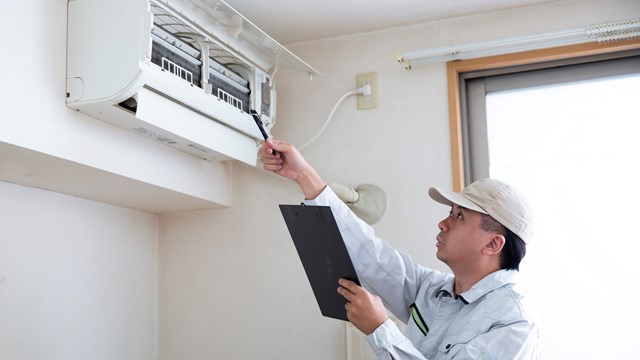As the climate crisis has worsened, governments at the federal, state, and local level have made attempts to legislate solutions. While necessary, that three-pronged approach can often make compliance a complicated process for multifamily buildings and associations.
A Question of Efficacy
Many moons ago, cigarette smoking was permitted everywhere—on airplanes, in restaurants, even doctors’ waiting rooms. Then various levels of government and businesses began to set limits on where and when smokers could indulge. The anti-smoking movement and reasoning behind it parallel the problem facing us today with climate change. While airlines and dining establishments may have designated certain areas as ‘smoking sections,’ the smoke itself of course went wherever the air currents carried it—including into ‘non-smoking’ sections.
So it is with climate change. Those who live in jurisdictions where the government and citizens are making an effort to reduce the carbon emissions that contribute to climate change are still affected by neighboring jurisdictions that don’t. Like smoke, climate change and its effects don’t stop at artificially drawn borders. Nevertheless, all efforts count. Some—specifically those undertaken by large municipalities—may have more impact because they cover larger geographic areas than those made by smaller jurisdictions, but they don’t erase the problem completely. They may slow the progress of the problem, but they are not a cure.
With that in mind, shared interest communities must consider many factors when making efforts to comply with energy conservation laws and ordinances, or in choosing not to comply in certain instances. Indeed, there may be times when requirements for compliance are so onerous that it makes more economic sense to just pay the fine rather than abide by the law. That’s a decision each community must make on a case-by-case basis.
New York
New York City has some of the most extensive and forward-looking local laws dealing with energy use anywhere in the country. Local Law 97 (LL97), the centerpiece of the City’s attempts to control carbon emissions, seeks to make the Big Apple carbon neutral by 2050. Its multiple components are being phased in over time, with the first major push for individual properties to control emissions evaluated in 2025. The next milestone year is 2030. Local Law 97 is so far-reaching, it figures into virtually every decision a co-op or condo will make about its physical plant.
Dan Wollman, CEO of NYC-based management firm Gumley Haft explains that LL97 work and requirements are actually based in another local law, LL84, which deals with energy benchmarking—the process by which a given building’s energy usage is measured and reported to the City. “You get a score based on your benchmark [numbers],” he says, “and that score is compared to other similarly-sized buildings to generate a letter grade. Once your energy usage is quantified and reported through LL84, it’s applied to how your property will comply with LL97. In the end, LL97 affects everything we do, whether it’s directly energy related or indirectly, such as replacing a roof. Everything we do now with regard to our physical plant is geared towards improving our LL97 score.”
The object of that score is to be in the ‘green zone’ not in the ‘red zone.’ If upon inspection your building lands in the ‘red zone’ you’ll be subject to a carbon tax. There was a carbon tax in 2025, but the real penalties don’t kick in until 2030. “Everyone is looking at 2030,” says Wollman, “and we have preliminary information that tells us who will likely pay a carbon tax under the present law. We think some of the law may change, because Con Edison is supposed to be delivering cleaner energy at this point, but so far they haven’t. That should theoretically trickle down to individual scores. As a result, and in the spirit of fairness and compliance, one should do everything one can do now. If you don’t make the grade in 2030, you may be subject to a carbon tax.”
New Jersey
“There’s no Local Law 97 type law anywhere in New Jersey,” says Michael Simone, principal of The Simone Law Firm, located in Cinnaminson. “However, one piece of legislation passed several years ago pertains to solar panels. HOAs are not permitted to prohibit the placement of solar panels on the roofs of individual member homes. However, in condominium associations—especially in multifamily, high-rise style buildings—since there’s more common area space, an individual owner doesn’t have the automatic right to use the roof. Laws in New Jersey encourage associations to work with homeowners to shift to solar for the community, but the discretion remains with the association to permit or not permit individual solar panels. It’s more a suggestion, as there aren’t any fines or punishments for not doing it. No benchmarks either.”
On the other hand, given that New Jersey is much more suburban in character and therefore much more car-dependent than a denser urban area like New York City, a real legislative effort has been made to encourage the migration to electric cars.
“The state has passed laws about electric vehicles (EVs) and charging stations,” says Simone. “The complication is the location and initial cost of setting it up.” A further complication is the potential for associations to lose one or more precious resident parking spots to install EV charging stations. “It’s a one vs. many question. It’s a bigger problem in a multifamily condominium with a garage than say, a townhome-style development with parking lots. The fact is when charging stations are added, especially in garages, parking spots are lost. On a broader level for New Jersey, electric car chartings stations cannot be prohibited by condos or HOAs. There cannot be any reasonable restrictions.”
Massachusetts
Massachusetts is a state with both dense urban centers and sprawling suburban areas enacting legislation to affect how residents deal with climate change. For example, Boston has the Building Emissions Reduction and Disclosure Act—commonly referred to as BERDO—which is similar to NYC’s ordinance in that it requires buildings over a certain size to report their energy usage to the City and to hit certain benchmarks for emissions and/or undertake improvements to lower them.
“In addition,” says Matthew Gaines, a partner with Marcus, Errico, Emmer & Brooks, a law firm located in Braintree, Massachusetts, “Massachusetts General Laws (MGL) c. 183A, Section 10(b)(6): informs us that the association shall have the power to require the installation of certain energy savings measures, including EV chargers, provided that such installation must be approved by a majority of unit owners in attendance at a meeting. However, the installation of solar panels is considered to be an improvement governed by Section 18, and therefore requires the approval of 75% of the unit owners. Furthermore, MGL c. 183A, Section 10A deals with the installation of EV chargers by unit owners in their dedicated parking spaces. A condominium association cannot prohibit or unreasonably restrict a unit owner from installing an EV charger in his/her dedicated parking space.”
A Word About Reserve Studies
In the wake of the deadly Surfside, Florida, building collapse disaster a few years back, some states—including Florida and New Jersey—have enacted laws that require condominium associations to complete regular reserve studies. Reserve studies are a direct investigation into the state of an association’s physical plant. While they are primarily concerned with the safety and reliability of the structure and its various components, these studies can also be used to determine whether action should or should not be taken on certain building systems that may also impact energy use and consumption. Wollman’s example of a roof earlier is a very good example. While the primary concern of a reserve study is to determine the continued viability of individual building systems—such as a roof—they can also tell us whether the roof is effective in terms of overall energy consumption and conservation, and whether it might need to be replaced for that reason.
Crucial as they are, however, completing a reserve study may complicate other matters. For example, “In New York,” explains Wollman, “reserve studies are not required and we don’t recommend them. It’s valuable and important to understand the infrastructure of your building, but not through a reserve study. We do systems studies and we make projections for repairs but we don’t want to get into specific reserves. If you do a reserve study, you must disclose it in your financial statement, and you have to give it to purchasers. There’s a footnote in most financial statements saying that a study wasn’t done. The real estate industry puts this in so that they don’t have to include it. If the study says it will cost X-dollars to repair something, and five years later the reality is that the real cost was Y-dollars, it could open up a lawsuit. That’s the legal reason we don’t do reserve studies.”
By contrast, Simone explains that in New Jersey, “In January 2025, a new law regarding reserve accounts went into effect. The main aspect of the law is that a reserve study must be done every five years. Once completed, it must be furnished to all current owners in association. In addition, when someone buys a unit they must also receive the latest reserve study. The passage of the law was an outgrowth of what happened in Surfside, Florida.”
Regardless of your state’s position on local energy laws or reserve studies, public funds to help defray the costs associated with both or either, are available. So confer with your management and legal counsel to map out a plan for achieving compliance, and check with your local utilities and with state government offices to learn more about the tools and resources available to help you get there.
A.J. Sidransky is a staff writer/reporter for CooperatorNews, and a published novelist. He may be reached at alan@yrinc.com.










Leave a Comment